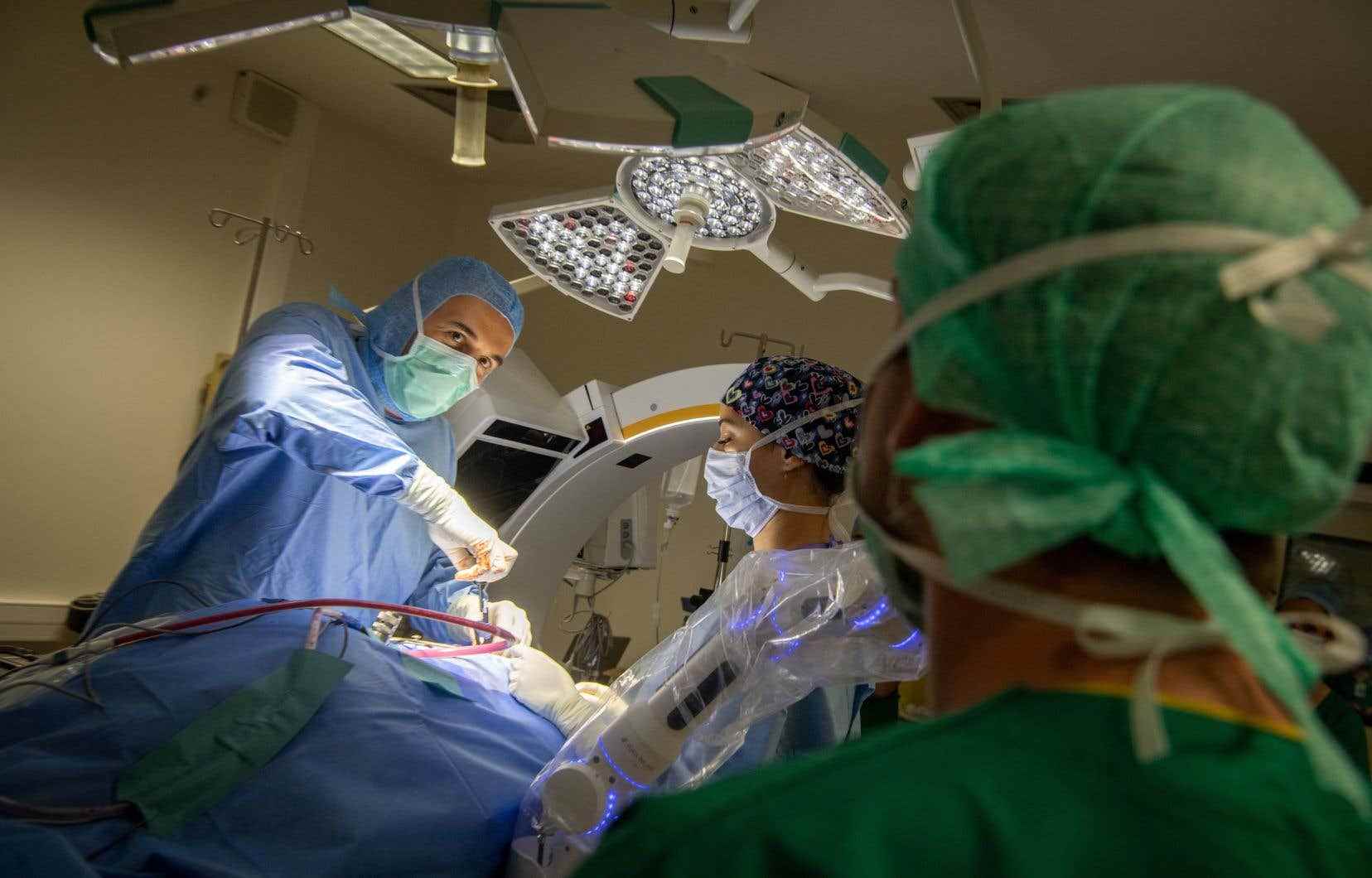Ontario announced major changes in the supply of private health services in mid-January, comparing the province with Quebec. The use of private clinics in Ontario, more important than before, arouses the anger in the unions of the health sector and in the opposition parties. It could nevertheless make it possible to bring the Ontario model closer to that of Quebec.
Ontario is turning to private clinics to reduce, at no cost to patients, its total backlog of surgeries, which currently stands at about 206,000; in Quebec, there are 163,991 people on the waiting list. Four Ontario clinics will help reduce the cataract surgery backlog with $8.5 million in provincial funding and a license that will allow them to perform more procedures. New clinics offering hip and knee replacements could also open by 2024.
The two neighboring provinces would then become more similar in their approach to surgical remediation. For example, in Ontario, 99% of knee and hip replacements are currently still performed in hospitals (only one private clinic exists), while in Quebec, at least eight specialized medical clinics (CMS) have a license to replace the knee or hip. Agreements were signed during the pandemic so that people can have private surgery free of charge in certain CMS.
Both provinces face significant backlogs in cataract surgeries. In Quebec, 28,603 people are waiting, compared to about 50,000 in Ontario. Each of the provinces has different systems to address this. Thirty-five CMS currently hold permits to carry out the intervention. Richard Weinstein, president of the Ontario Ophthalmological Association, doesn’t know the exact number of clinics offering the service in Ontario, but only three are provincially funded.
Different systems
Ontario has nearly 900 private, provincially funded, stand-alone health facilities where medicare services are provided. About 98% of them are for profit. Doctors may open a completely private clinic, but the reimbursements from the health insurance plan are not enough to pay all the operating costs. Provincial funding is attached to the granting of the permit allowing autonomous establishments to open, thus covering these costs.
However, hip and knee replacements are not yet permitted at these Ontario facilities. The province plans to introduce a bill to remedy the situation, but has not yet specified what it would contain. It is currently not possible for any of these facilities to keep a patient overnight, which could be changed: the majority of hip or knee replacements require more than one day of stay at the hospital, although a small number are done in 24 hours.
The arrival of new provincially funded private institutions is rare in Ontario: the province has not issued any new licenses in 20 years. According to Lynne Golding, health lawyer at Fasken, the significant costs associated with it for the province and the lack of consensus on the benefits of an increase in operations carried out in private clinics are the reasons for this. In Quebec, the number of CMS has increased from 49 in 2017 to 68 today.
worries
Ontario’s announced changes are being welcomed by health care leaders, but some experts say they come with risks. According to Abi Sriharan, who is a professor at the University of Toronto and who studies public health policy, workers in the community could be tempted to leave the hospital to go to work in private clinics in order to obtain better conditions. of work, which would fragment an often already fragile system.
Professor Sriharan is also concerned about the creation of a two-tier system in ophthalmology. “Clinics will sometimes say that the wait for publicly funded cataract surgery is six months, but the patient can pay for it the next week. »
The Dr Richard Weinstein believes that concerns in this regard are exaggerated. “I don’t tell my patients that they can pay to see better. Premier Doug Ford, for his part, stressed that “all Ontarians need is their health card.”
This story is supported by the Local Journalism Initiative, funded by the Government of Canada.
